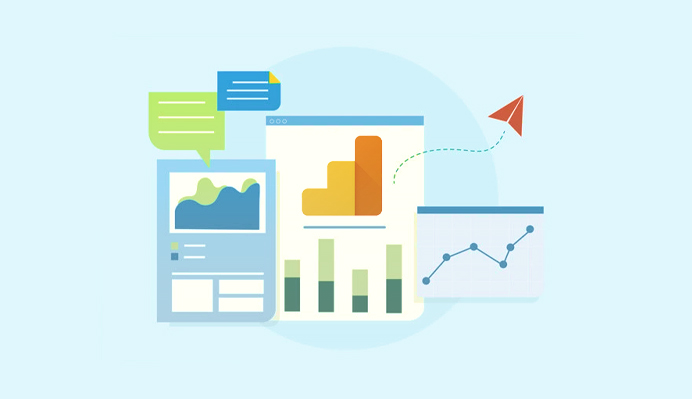Raising Your Online Presence With Advanced Google Analytics Methods
In the huge landscape of online visibility administration, the ability to browse and harness the power of advanced Google Analytics approaches can dramatically affect the success of a digital endeavor. As the digital world develops, the need for sophisticated information analysis comes to be vital in understanding customer actions and optimizing on-line performance. By including advanced Google Analytics strategies, companies can gain much deeper understandings, make educated decisions, and inevitably improve their on the internet existence. The realm of opportunities that these methods offer is large, assuring a realm of untapped possibility for those going to explore past the essentials.
Establishing Advanced Google Analytics
For a thorough understanding of Advanced Google Analytics, the first action entails establishing up the system with precision and attention to detail. Setting up Advanced Google Analytics requires a structured approach to guarantee precise data collection and insightful reporting. Begin by creating a Google Analytics account and residential property for the internet site or application that requires monitoring.
Furthermore, establishing innovative attributes such as custom measurements, occasion monitoring, and improved ecommerce needs a deeper understanding of the platform. Tailoring records with dashboards and segments allows for customized evaluation based upon certain metrics or individual habits. Consistently maximizing the configuration and examining guarantees that Advanced Google Analytics functions properly in supplying important understandings for enhancing on the internet efficiency.
Making Use Of Customized Records for Insights
Upon developing a robust structure by establishing up Advanced Google Analytics efficiently, the following step involves using the power of customized records to get important understandings right into site or application performance. Personalized records provide a customized view of information that is particular to the dimensions and metrics important to your service objectives. By using customized records, you can evaluate customer habits, track conversion rates, and keep track of the success of advertising campaigns in more detail than standard reports permit.
Creating custom-made records in Google Analytics includes choosing the metrics and measurements that align with your crucial efficiency indicators (KPIs) This personalization allows you to focus on the most appropriate information for your analysis, resulting in even more workable understandings. Additionally, custom-made records can be set up for regular shipment by means of e-mail, guaranteeing that stakeholders remain educated without requiring to log right into the analytics platform on a regular basis.
Leveraging Boosted Ecommerce Tracking
Carrying Out Boosted Ecommerce Monitoring allows companies to dig much deeper right into on-line consumer actions and maximize their sales strategies with comprehensive insights. This sophisticated function in Google Analytics uses a comprehensive view of the entire client journey, from the preliminary communication to the last acquisition. By tracking particular actions such as product views, adding products to the cart, and finishing purchases, businesses can analyze the effectiveness of their online shop and make data-driven choices to improve the general shopping experience.

Implementing Advanced Segmentation Strategies
Exploring sophisticated division techniques in Google Analytics can substantially boost the deepness of insights organizations gain from their data evaluation efforts. By executing innovative division methods, services can properly separate and analyze specific subsets of data to discover important patterns and patterns. This technique permits an extra granular understanding of customer actions, making it possible for businesses to make data-driven decisions with accuracy.

In addition, behavioral division can be utilized to team users based upon their activities on the site, such as web pages went to or products acquired. This segmentation strategy offers insights right into user engagement and conversion courses, aiding services maximize their online existence for better performance.
Enhancing With A/B Testing and Experiments

Experiments in Google Analytics allow services to check modifications to their web sites or apps in a controlled environment. By integrating A/B testing and experiments with advanced division strategies, services can fine-tune their online presence, maximize customer experiences, and drive significant results based on strong information analysis.
Conclusion
Finally, implementing innovative Google Analytics methods can considerably enhance your on-line visibility. By establishing custom records, making use of improved ecommerce tracking, applying division methods, and optimizing with A/B screening, you can acquire valuable understandings and enhance your site efficiency. These sophisticated strategies permit you to make data-driven decisions and better recognize your audience, inevitably causing a navigate to these guys more effective online visibility.
In the substantial landscape of online visibility administration, the ability to browse and harness the power of advanced Google Analytics approaches can considerably influence the success of a digital endeavor. By incorporating innovative Google Analytics techniques, organizations can acquire much deeper insights, make notified choices, and ultimately improve their online existence.Discovering advanced segmentation methods in Google Analytics can significantly improve the deepness of understandings companies gain from their information evaluation initiatives.By leveraging the insights acquired from innovative division techniques in Google Analytics, companies can better boost their data analysis efforts with the strategic usage of A/B testing and experiments for optimization functions.In verdict, implementing sophisticated Google Analytics methods can dramatically boost your online presence.
Comments on “Described: What Is Not Considered a Source in Google Analytics by Default”